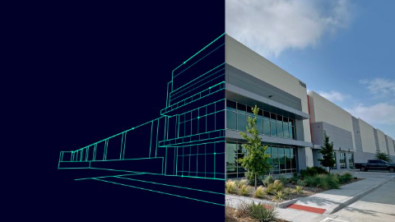Unveiling the Beneficial Secrets of Production Costing – Siemens Webinar Recap

In a recent Siemens Digital Industry Software webinar, we explored the intricacies of production costing in electronics manufacturing. This recap will provide you with the essential insights and takeaways shared by our experts, Kevin Decker-Weiss and Paul Carpine.
The Challenges in Production Costing in Electronics Manufacturing
The costing process in electronics manufacturing is complex due to the industry’s variability, stemming from different machines, labor rates, and other external factors. As companies expand and consolidate, streamlining processes and centralizing data across multiple facilities becomes a crucial task.
However, who is responsible for production costing within organizations? It’s not a simple answer but the tools used usually are.
The Prevalent Use of Excel-Based Tools and Their Limitations
Excel-based tools are commonly used for production costing. However, there are many limitations because of this approach. Data discrepancies and multiple versions of calculation sheets often lead to confusion and errors. Moreover, Excel tools heavily rely on manual updates, introducing significant risks.
The Solution: Transitioning to Advanced Quoting Solutions
Transitioning to advanced quoting solutions is the key to overcoming the limitations of Excel-based tools for production costing.
- These solutions leverage data from multiple sources, including ERP systems, CAD, MES information, and multi-site considerations, providing a comprehensive view of the cost landscape.
- The primary goal is to reduce the need for manual data entry, thus improving accuracy and streamlining the entire costing process.
The result is a more efficient, error-free approach to production costing.
Industry 4.0 Integration and Design for Cost (DFC)

This paradigm shift emphasizes a data-centric approach. By integrating data and leveraging it for informed decision-making, manufacturers can achieve:
- Automation within their processes.
- Increased precision
- Efficiency
A pivotal insight from the webinar was the exploration of Design for Cost (DFC). This approach empowers engineers to comprehend cost factors during the design phase, enabling data-driven decisions. DFC allows for early cost analysis, identifying potential manufacturing risks and cost factors at the design’s inception.
The Flexibility of Siemens’ Solution
Users can customize production steps based on specific requirements, and each step can have unique time and cost formulas tailored to various parameters such as component class, size, and lot size. This flexibility empowers users to simulate a wide range of scenarios, fostering better decision-making.
The clip below, from the webinar, goes into more detail.
Real-Life Success Story: Omnigo
Omnigo, a South African EMS company demonstrated the tangible benefits of transitioning from Excel-based methods to Siemens’ advanced solution. This transition resulted in significant improvements in quotation processes, enhanced accuracy, and a streamlined workflow.
Embracing Advanced Solutions for Production Costing
The Siemens webinar not only illuminated the challenges faced in electronics manufacturing costing but also shed light on the transformative potential of Industry 4.0 integration and Design for Cost principles.
Engineers and manufacturers striving to stay at the forefront of the industry should closely monitor these emerging trends and consider advanced solutions for production costing.
Call to Action: Watch the Full Siemens Webinar
Want to learn more? Watch the full Siemens webinar to get a deeper understanding on the topic.
Frequently Asked Questions about PCB Assembly:
What is PCB assembly?
PCB assembly refers to the process of attaching electronic components onto a printed circuit board, creating a functional electronic device.
How does automation benefit PCB assembly?
Automation speeds up the assembly process, reduces errors, and ultimately leads to cost savings in electronics manufacturing.
What is Surface Mount Technology (SMT)?
SMT involves directly attaching components to the surface of a PCB, enabling faster and more efficient assembly.
Why is miniaturization important in electronics manufacturing?
Miniaturization allows for more compact and powerful electronic devices, driving innovation and meeting consumer demands.
What role does quality control play in PCB assembly?
Quality control ensures that PCB assemblies are free from defects, enhancing the reliability and performance of electronic devices.


